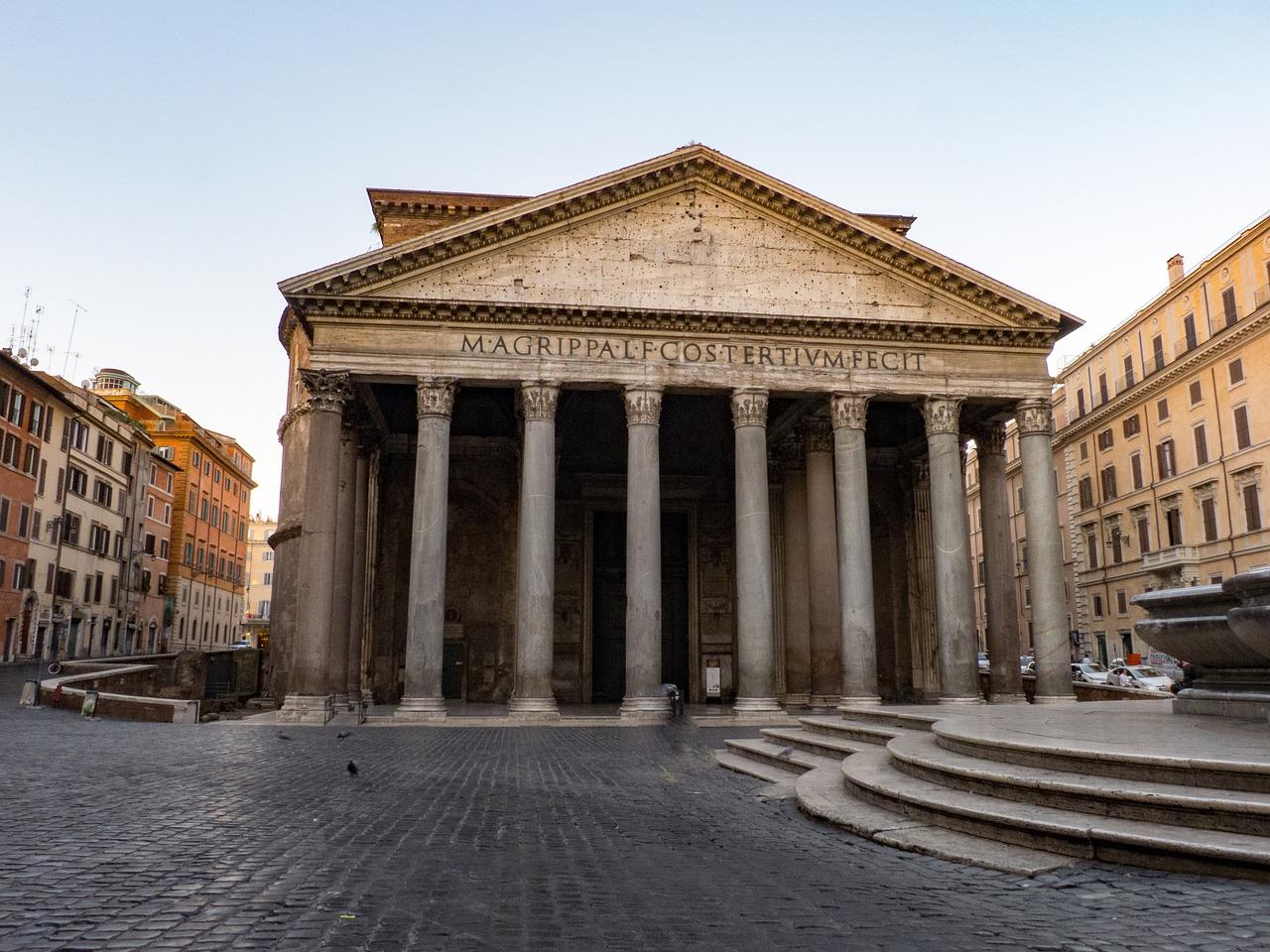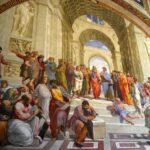The Pantheon is one of the fifteen best attractions in Europe. The Pantheon is the most beautiful and best preserved Roman monument, one of the greatest and most complete works of Roman architecture, built between 25 and 27 B.C. by Consul Agrippa, an officer of the Emperor Augustus.
For over two thousand years, the Pantheon has represented the highest expression of the glory of Rome. Its history is inseparable from the development of the Eternal City, which has been reflected over the centuries. The Pantheon served as an inspiration to the greatest architects of the Renaissance, so much so that Raffaello wanted it as a place of eternal rest. It is the only Roman building that has remained intact through the centuries.
The history of the Pantheon is unique, so make the most of your stay in Rome and discover the Pantheon as well as other famous monuments of Baroque Rome such as Piazza Navona, Fontana di Trevi and Piazza Spagna.
Its construction
In 80 AD, Domitian rebuilt it after a fire. However, thirty years later, lightning struck the site, which caught fire again. Then it was rebuilt in its present form by Emperor Hadrian, a kingdom under which Rome reached the height of its splendor. It is believed that the current structure is precisely the result of this versatile talent of exotic tastes. In fact, he added to the Pantheon a cylindrical structure, of Roman style, and the large external columns, of Greek inspiration. Michelangelo said that this work would have been made by angels, not by men.
The legend
The exact location of the monument is not a coincidence, but a legendary place in the history of the city. According to Roman legend, it was here that the founder of Rome, Romulus, at the time of his death, was captured by an eagle and taken to heaven among the gods.
Know the Pantheon in Rome?
Pantheon means “all the gods” in Greek. Also known as the Pantheon of Agrippa, it is the best preserved Roman monument, both structurally and in terms of finishes and ornaments. The construction was inaugurated around 27 BC and sponsored by the consul of the time, Marcus Vipsanius Agrippa, during the reign of Emperor Augustus, and then rebuilt by Emperor Hadrian around 126 BC.
The temple was erected to serve as a place dedicated to the worship of all the gods. After the fall of the Roman Empire, to ardently fight any vestige of paganism and pantheism, in 609 BC, the site was transformed into the Basilica of Saint Mary of the Martyrs. The Pantheon was the inspiration for other buildings where illustrious dead are honored or buried. Inside the building are buried great figures of Italian history, such as King Vittorio Emanuele II of Savoy, Queen Margherita of Savoy, and the Renaissance genius Raphael. The dome of the Pantheon
What makes the Pantheon famous throughout the world is undoubtedly its dome of great proportions – its opening or oculus, as it is called, is 9 meters in diameter. In fact, the work is not supported by any type of column or pillar, which has prompted architecture and engineering students around the world to seek explanations for this feat.
Video
The work is made of poured concrete with a kind of caisson built on a temporary cimbramento. The materials used in the concrete of the dome are varied, with the base materials being more solid and heavy, and the portcullis made of a lighter concrete using pumice. The oculus, in turn, is the main source of natural light for the attraction, which also allows rain to enter the construction. In total, there are twenty-two drains used to evacuate water.
As for the weight of this true beauty, it works as follows: the weight of the dome is concentrated on a compression ring, which forms the oculus, redistributing the weight to the lower structures – eight vaults and eight pillars. The caissons, in addition to producing a great aesthetic effect (especially after painting), also relieve the weight of the dome, since they reduce the amount of concrete to be used in construction, leaving this structure much lighter. A shower of petals to celebrate Pentecost.
As we walk through the front door, we see this huge empty space that makes us feel small. This is how people should feel in front of the presence of the gods; whoever enters the Pantheon today has the opportunity to feel the same feeling that the Romans had two thousand years ago.
The space shows a perfect sphere, which symbolizes the celestial globe. Its rounded shape allows to put all the gods on the same level of importance. Thus, in the whole space there are seven deities related to the cult of the planets as: the Sun, the Moon, Venus, Saturn, Jupiter, Mercury and Mars. These gods are separated by seven niches between two Corinthian columns. With the Christianization, some of these niches were used for the construction of small altars dedicated to Christian martyrs.
Its Majestic Dome
The grandeur of the Pantheon is mainly due to its majestic dome: to date, it is the largest masonry dome ever built. Visitors can explore the history and architecture of the Pantheon by standing either in the dome or in the characteristic eyepiece (a huge hole measuring 9 meters in diameter).
The eyepiece is a brilliant idea, as the Pantheon has no windows, and light enters exclusively from above, illuminating the environment through the beam of light inside. Around noon, the sun’s rays coming from the lunette become extraordinarily intense. The lunette also served as an exhaust for the smoke of the sacred candles, so it was not believed that it was built to keep out rainwater. In fact, when it rains, it also rains inside the Pantheon, but the floor is slightly convex, so the water runs off through a drainage system.
Our Lady of the Martyrs
The building was later transformed into a Christian church, called Our Lady of the Martyrs, in the year 609 – which helped save it from destruction. It is the only Roman building that still preserves the marble covering, the mosaics, the stucco and the huge bronze doors (which, at seven meters, are the largest of all Roman doors).
How to get to the Pantheon?
Opening hours: every day from 9am to 7pm (last entry at 6:30pm). On public holidays, it is open from 9am to 1pm. There may be a limit during religious celebrations.
Address: Piazza della Rotonda.
Address: Piazza della Rotonda, 00186 Rome RM, Italy
Ticket price: €7
https://www.pantheonroma.com
Buses: 64 (from Termini station) and 62. Buses 492/81/40/87/30. The Pantheon is 400 meters from the Tower of Argentina.
Metro: “Barberini” station on line A, and then walk or take the bus in Via del Tritone to the intersection with Via del Corso. From there, walk past the Palazzo di Montecitorio and the Parliament.
https://goo.gl/maps/QjEsMPN6deaBFN8W6





